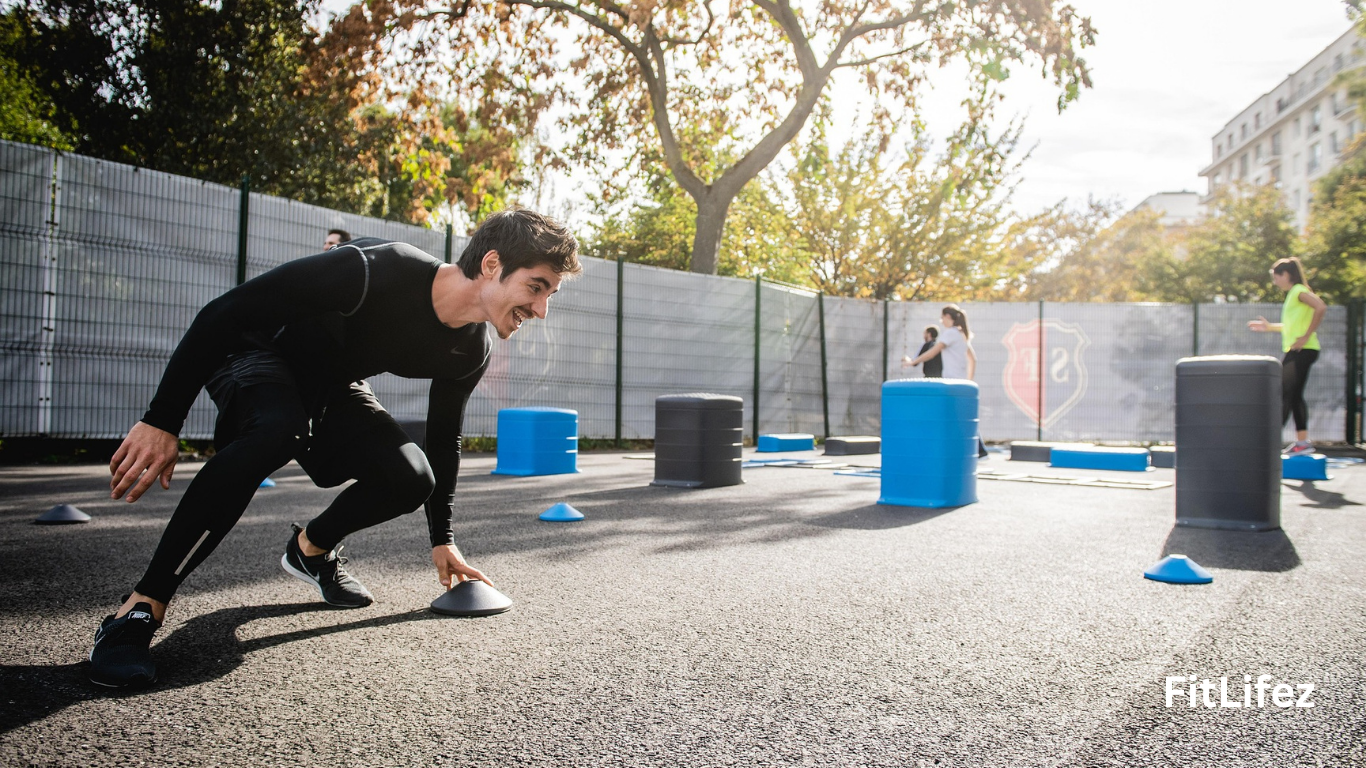Introduction
Hello, dear readers! My name is Muhammad Shakeel, and I am thrilled to share my knowledge with you on this important topic. With five years of experience in article writing and a passion for health and fitness, I founded FitLifez.com to help people like you achieve their best selves.
Today, we are going to explore a topic that’s crucial to our understanding of health: physical fitness. We will delve into various statements about physical fitness to discern which ones hold true and how they can impact our lives.
Understanding Physical Fitness
Before we dive into assessing statements about physical fitness, it’s essential to have a clear understanding of what physical fitness entails. Physical fitness is a state of health and well-being and, more specifically, the ability to perform aspects of sports, occupations, and daily activities. It is generally achieved through proper nutrition, moderate-vigorous physical exercise, and sufficient rest.
Physical fitness is composed of various components, including cardiovascular endurance, muscular strength, muscular endurance, flexibility, and body composition. Each of these elements plays a crucial role in our overall health and ability to perform physical activities.
Common Statements About Physical Fitness
In today’s world, where information is readily available at our fingertips, it’s easy to come across numerous statements regarding physical fitness. However, not all of them are accurate. Let’s explore some common statements and determine which ones are true:
1. Cardio is the only way to lose weight.
While cardiovascular exercise is highly effective for burning calories and losing weight, it is not the only method. Strength training plays a significant role in weight management as well. Building muscle increases your resting metabolic rate, which means you burn more calories even when at rest. Therefore, a combination of cardio and strength training is often the most effective strategy for weight loss.
2. You need to exercise every day to be fit.
Many people believe that daily exercise is necessary for physical fitness, but this isn’t entirely true. Rest and recovery are vital aspects of any fitness regimen. Overtraining can lead to injuries and burnout. The key is consistency, not necessarily frequency. Most fitness experts recommend exercising three to five times a week to maintain and improve fitness levels.
3. Spot reduction is an effective way to lose fat in specific areas.
Spot reduction, or the idea that you can lose fat in specific body parts by targeting those areas with exercises, is a common misconception. Fat loss occurs throughout the body, and it is influenced by overall caloric expenditure and consumption. While targeted exercises can build muscle in specific areas, they won’t selectively burn fat.
4. Flexibility is just as important as strength and endurance.
True! Flexibility is a critical component of physical fitness. It enhances the range of motion of your joints, reduces the risk of injury, and improves overall performance. Incorporating stretching exercises into your routine can enhance flexibility and contribute to better overall fitness.
5. A balanced diet is essential for physical fitness.
Absolutely true. Nutrition and physical fitness go hand in hand. A balanced diet provides the necessary nutrients your body needs to perform optimally during physical activities. It supports muscle growth, repairs tissues, and provides the energy needed for exercise. Without proper nutrition, achieving peak physical fitness is challenging.
The Science Behind Physical Fitness

To better understand which statements about physical fitness are true, it’s helpful to delve into the science behind it. Physical fitness is a complex interplay of various bodily systems, including the cardiovascular, respiratory, muscular, and skeletal systems. Here’s a closer look at how these systems contribute to fitness:
Cardiovascular System: Cardiovascular endurance is essential for delivering oxygen to muscles during prolonged physical activity. Regular cardiovascular exercise strengthens the heart, improves circulation, and increases lung capacity.
Muscular System: Muscular strength and endurance are crucial for performing daily activities and sports. Strength training exercises, such as weightlifting, enhance muscle function and increase metabolic rate.
Flexibility and Mobility: Flexibility exercises, such as yoga and Pilates, improve joint range of motion and reduce the risk of injury. They also enhance posture and overall body mechanics.
Nutrition: A well-balanced diet provides the necessary fuel for physical activity. Proteins, carbohydrates, and fats are all essential macronutrients that play specific roles in energy production and muscle repair.
Tips for Achieving Optimal Physical Fitness
Now that we have a better understanding of what physical fitness is and which statements are true, let’s explore some practical tips for achieving and maintaining optimal fitness levels:
1. Set Realistic Goals: Establish clear, achievable goals that align with your fitness level and lifestyle. Whether it’s losing weight, building muscle, or improving endurance, having specific goals will help you stay motivated.
2. Create a Balanced Routine: Incorporate a mix of cardiovascular exercises, strength training, and flexibility exercises into your routine. This balanced approach ensures that all aspects of fitness are addressed.
3. Prioritize Nutrition: Fuel your body with a balanced diet rich in whole foods. Focus on consuming lean proteins, whole grains, fruits, vegetables, and healthy fats to support your fitness journey.
4. Stay Consistent: Consistency is key to achieving long-term results. Make exercise a regular part of your routine, and remember that progress takes time.
5. Listen to Your Body: Pay attention to how your body responds to exercise. Rest when needed, and don’t push through pain. Recovery is an essential component of any fitness program.
6. Seek Professional Guidance:If you’re unsure where to start or how to progress, consider working with a fitness professional. They can provide personalized guidance and create a tailored program to meet your needs.
The Role of Mental Fitness
While physical fitness is often the focus, it’s essential to recognize the importance of mental fitness as well. Physical activity has been shown to have numerous mental health benefits, including reducing symptoms of depression and anxiety, enhancing mood, and improving cognitive function. Here are some ways to incorporate mental fitness into your routine:
Mindfulness and Meditation: Practicing mindfulness and meditation can help reduce stress and improve mental clarity. Consider incorporating these practices into your daily routine to enhance overall well-being.
Mind-Body Exercises: Activities like yoga and tai chi focus on the connection between the mind and body. These exercises promote relaxation and improve mental focus.
Social Connections: Engaging in group fitness activities or exercising with friends can boost your mental fitness by providing social support and motivation.
Conclusion
In conclusion, understanding which statements about physical fitness are true is crucial for making informed decisions about your health and well-being. By debunking common myths and embracing evidence-based practices, you can create a balanced and effective fitness routine that supports your goals.
Remember, physical fitness is not just about aesthetics or performance; it’s about improving your quality of life and ensuring long-term health. Whether you’re a seasoned athlete or just starting your fitness journey, the key is to stay informed, stay consistent, and prioritize both physical and mental fitness.
For more insights and guidance on living a healthy and active lifestyle, visit my website at [FitLifez.com](https://fitlifez.com/). Here, you’ll find a wealth of resources, tips, and inspiration to help you on your path to a fitter, healthier you.
Thank you for joining me on this exploration of physical fitness, and I wish you all the best on your journey to optimal health!

